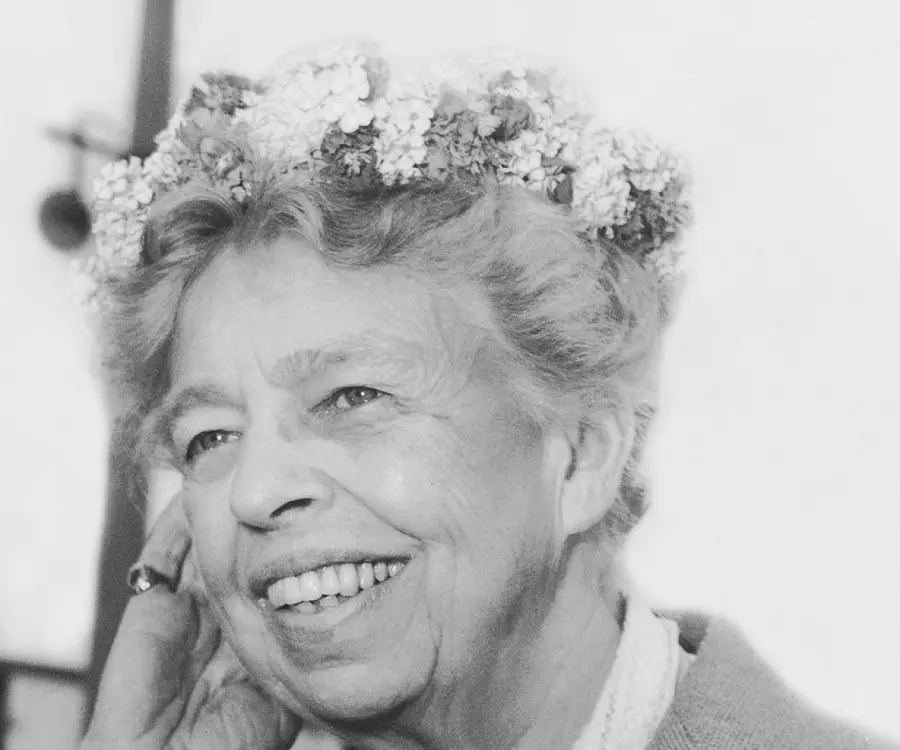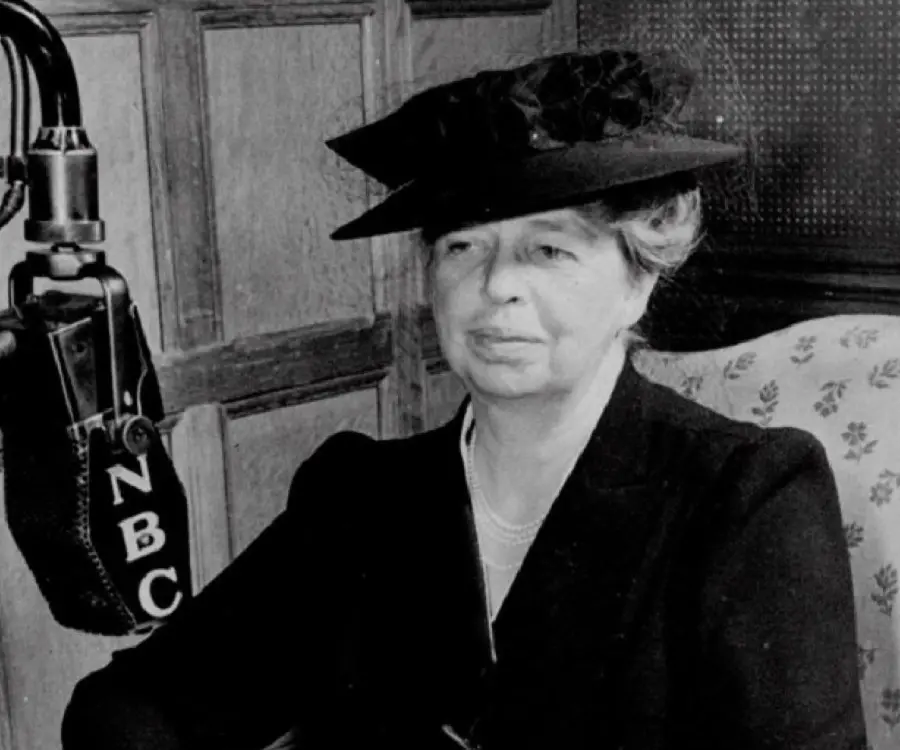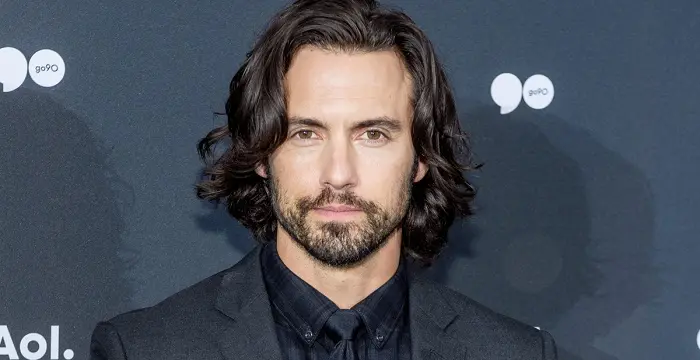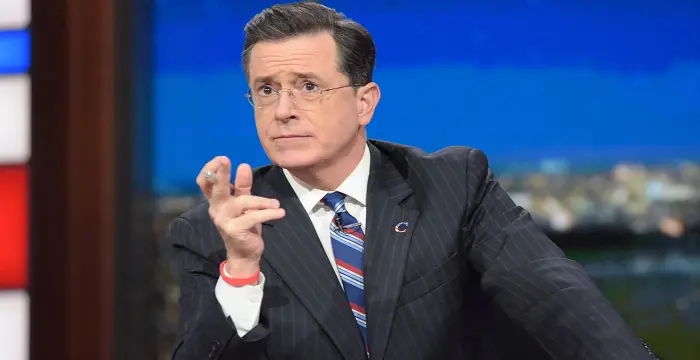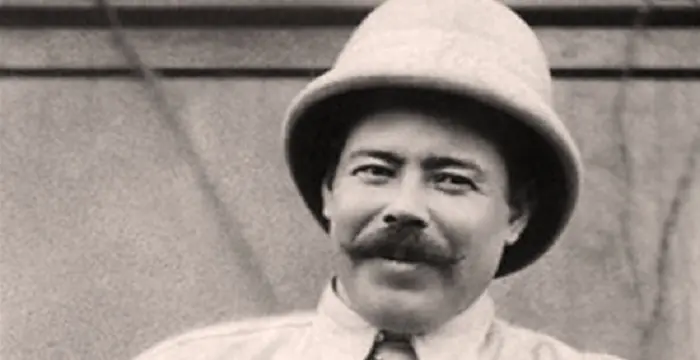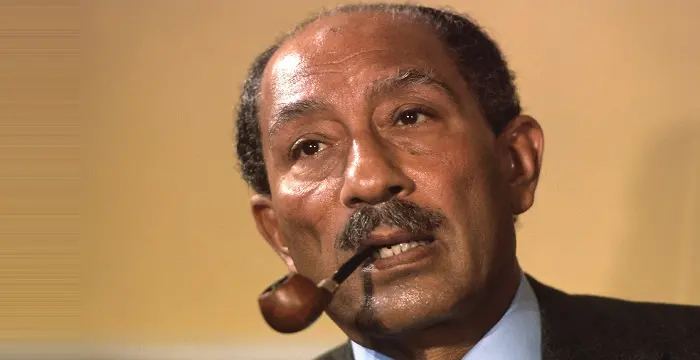
Eleanor Roosevelt - Promoter of New Deal, Family and Childhood
Eleanor Roosevelt's Personal Details
Eleanor Roosevelt was the the First Lady of the United States from 1933 to 1945
| Information | Detail |
|---|---|
| Birthday | October 11, 1884 |
| Died on | November 7, 1962 |
| Nationality | American |
| Famous | Democrats, Activists, Leaders, Political Leaders, Diplomats, First Ladies, Promoter of New Deal, Wife of American President Franklin Delano Roosevelt |
| Ideologies | Democrats |
| Spouses | Franklin D. Roosevelt |
| Siblings | Elliott Bulloch Roosevelt Jr., Gracie Hall Roosevelt |
| Childrens | Anna Roosevelt Halsted, James Roosevelt |
| Universities |
|
| Cause of death |
|
| Birth Place | New York City, New York, USA |
| Political Ideology | Democratic |
| Religion | Episcopalian |
| Gender | Female |
| Father | Elliott Bulloch Roosevelt |
| Mother | Anna Rebecca Hall |
| Sun Sign | Libra |
| Born in | New York City, New York, USA |
| Famous as | Wife of American President Franklin Delano Roosevelt, Activist and Promoter of New Deal |
| Died at Age | 78 |
Eleanor Roosevelt's photo
Who is Eleanor Roosevelt?
Eleanor Roosevelt was the wife of former American President Franklin Delano Roosevelt and the First Lady of the United States from 1933 to 1945. After the death of President Roosevelt, Eleanor rose to fame with her work related to women’s empowerment, New Deal coalition and as a writer, public speaker and political activist. She was a keen political figure who had chaired the John F. Kennedy administration's path breaking committee that brought the start of second-wave feminism. Her role as the chairman of the Presidential Commission on the Status of Women from 1961 to 1962 made her rank in the top ten of the ‘Gallup's List of Most Widely Admired People of the 20th Century’. Eleanor Roosevelt was a powerful figure who played a significant role in co-founding the NGO, ‘Freedom House’ and supporting the formation of the United Nations. She worked hard to bring positive changes in statuses of working women. She was a woman of various roles. She was invited by President Harry S. Truman and confirmed by the United States Senate to become a delegate to the UN General Assembly from 1945 and 1952. Eleanor Roosevelt rose much higher than being just the wife of President Roosevelt as she not only supported her husband’s New Deal policies but also became a prominent advocate of America’s civil rights.
Childhood & Early Life
Anna Eleanor Roosevelt was born on October 11, 1884 in New York City. Her parents, Elliott Bulloch Roosevelt and Anna Rebecca Hall, were well-known socialites.Theodore Roosevelt, the 26th President of the United States, was her father’s elder brother.
Eleanor, who preferred to be known by her second name, was the eldest of her parents’ three children and had two brothers, Elliott Bulloch Jr. and Gracie Hall Roosevelt. In addition, she had a half brother named Elliott Roosevelt Mann, born through her father's liaison with a family employee Katy Mann.
In October 1892, Eleanor’s mother died from diphtheria and in May 1893, her brother Elliott passed away from the same disease. Soon her alcoholic father had to be confined into a sanatorium. He died there in August 1894.
Eleanor and Hall now began to live in the household of their maternal grandmother, Mary Livingston Ludlow, in Tivoli, New York. Although all her material needs were taken care of, mentally she was very unhappy and insecure. In spite of that, she took good care of Hall.
Eleanor was educated at home up to the age of fifteen. Thereafter, at the insistence of her aunt Anna Roosevelt Cowles, her father’s sister and a trusted confidante of President Roosevelt, she was sent to Allenswood Academy, a private finishing school in Wimbledon, England.
Here she studied from 1899 to 1902 and under the guidance of the headmistress she began to blossom. Her training during this period played a key role in shaping her social as well as political ambitions.
Return To USA
In 1902, Eleanor returned to USA at the bidding of her grandmother to be presented at the debutante ball in December. However, by then she had changed a lot and was more interested in social activities than parties and balls.
She now joined the National Consumers League as well as the Junior League for the Promotion of Settlement Movements and volunteered to teach at the College Settlement. Her dedication soon attracted the attention of reform circles in New York.
Also in the summer of 1902, she met Franklin Delano Roosevelt, her father’s fifth cousin from the Hyde Park line of the family. Subsequently, they got married on March 17, 1905 with Theodore Roosevelt signing the marriage certificate as a witness.
For about a decade, Eleanor’s life was controlled by her dominant mother-in-law Sara Ann Delano Roosevelt. She lived in the neighboring property in Hyde Park and for easier access into her son’s home, had connecting doors built between the two properties. She ran both the households.
Later, when her children began to be born, Sara also took control of their upbringing. Eleanor continued to struggle, concentrating on her domestic duties.
Sometime in 1911, FDR, as Franklin Roosevelt was popularly known, was elected to the New York Senate. Taking this opportunity, Eleanor moved to Albany, away from her dominating mother-in-law and set up her first real home.
Political Awakening
In the fall of 1913, FDR joined Woodrow Wilson’s administration as an Assistant Secretary of Navy. Eleanor now began to have a more proactive role, overseeing FDR’s transition from a Senator to a Junior Cabinet Member.
It not only increased her managerial skills, but also boosted her self-confidence. She now became more independent. During the First World War, Eleanor began her war-related work, volunteering to serve the navy hospitals and American Red Cross.
In September 1918, as the WWI was drawing to an end, she discovered that FDR was having an affair with his secretary Lucy Mercer and was contemplating of leaving her. Although the marriage survived, Eleanor became disillusioned with it and from then on the marriage was reduced to a political partnership.
Emergence As A Public Figure
In 1920, FDR was nominated as the Democratic vice presidential candidate. Eleanor toured the country with him, making her first campaign appearances. As the Democrats lost the election, they returned to New York, where she continued with her public works.
In August 1921, FDR was afflicted with polio and became paralyzed. While his mother wanted him to retire from politics, Eleanor persuaded him to continue with it. She not only tended him devotedly, but also began to serve as a stand-in, making public appearances for him.
At the same time, she started working with the Women's Trade Union League, raising funds for them. Over the time, she became an influential leader with the New York State Democratic Party.
In 1924, she campaigned for Democrat Alfred E. Smith against her first cousin Theodore Roosevelt, Jr. in their run for New York State governorship. While Smith won the election by 105,000 votes, her relationship with her family became sour.
In 1927, Eleanor, along with few of her friends established Val-Kill Industries to provide supplemental income for local farming families; here they made furniture, pewter, and homespun cloth using traditional craft methods. She also played an important role in expanding the Dalton School.
In 1928, she played a significant role in promoting FDR in his successful bid as the governor of New York. During her husband’s governorship, Eleanor traveled widely through the state, inspecting state facilities, giving speeches and reporting to FDR at the end of each trip.
Tenure As The First Lady
On March 4, 1933 Franklin Delano Roosevelt became the 32nd President of the United States of America and with that Eleanor Roosevelt became the First Lady of the country. However, the designation actually depressed her because she could not envisage a life similar to the ones led by the previous First Ladies.
Therefore, she set on redefining the role and with her husband’s firm support, continued looking after her business interests and also giving speeches. While this attracted criticism, she earned $75,000 from her lectures and writing in the very first year.
While the ‘Bonus Army’ of WWI veterans and their families came marching to Washington DC, Eleanor went to meet them. She defused the tension between the administration and the veterans, paving the way for a permanent solution.
During her tenure as the First Lady between 1933 and 1945, she traveled widely, appeared regularly at press conferences and spoke about human rights, women’s issues and children’s causes. She also appeared regularly at labor meetings, reaching out to the workers during the Great Depression.
Moreover, she actively supported American Youth Congress and National Youth Administration, the latter being a New Deal Agency formed in the response to the Great Depression. She also dedicated a lot of her time and energy for anti-lynching campaigns and for fair housing for minorities.
As the Second World War broke out in 1939, she took up war time causes like allowing immigration of European refugee children to USA. She also tried to persuade the administration to accept greater number of Jews, persecuted by Nazis, but was not very successful in that.
In 1941, Eleanor Roosevelt co-chaired the Office of Civilian Defense and also wrote a script for a short film 'Women in Defense', which was released in the same year. Concurrently, she began to encourage women of all classes to learn trade and be independent.
In October 1942, she went to England, where she visited American troops as well as the British forces. In August 1943, to boost the morale of the American troops stationed in the South Pacific, she travelled there and was most shaken by what she saw.
Life After White House
Franklin Roosevelt suffered a cerebral hemorrhage in April 1945 and died on 12 April. Eleanor now returned to Val-Kill, a property she herself had built. Although she now decided to lead a private life, it was not to be.
In 1945, she was appointed a delegate to the United Nations General Assembly by President Truman, a position she held until 1953. From April 1946 to 1951, she was the chairperson of the preliminary United Nations Commission on Human Rights.
In 1961, she was reappointed to the United States delegation by President John F. Kennedy. She was later appointed to the National Advisory Committee of the Peace Corps and to chair the President's Commission on the Status of Women.
Major Works
As Chairperson of United Nations Commission on Human Rights, she played an important role in drafting the Universal Declaration of Human Rights (UDHR). It was adopted by the General Assembly on December 10, 1948 by a vote of 48 in favor, none against; though eight countries abstained from voting.
Apart from her public work, she also found time to write several books about her life and experiences, including ‘This Is My Story’ (1937), ‘This I Remember’ (1949), ‘On My Own‘ (1958) and ‘Autobiography’ (1961). Besides, from 1936 until her death she wrote a syndicated column, ‘My Day’, which appeared six days a week.
Awards & Achievements
In 1968, in recognition of her work, the United Nation awarded her one of its first Human Rights Prizes posthumously.
Personal Life & Legacy
Franklin and Eleanor Roosevelt had six children, Anna Eleanor Roosevelt, James Roosevelt II, Franklin Roosevelt, Elliott Roosevelt, Franklin Delano Roosevelt, Jr. and John Aspinwall Roosevelt II.
In April 1960, Eleanor Roosevelt was diagnosed with aplastic anemia. In 1962, she had to be given steroids, which activated a dormant case of bone marrow tuberculosis.
On November 7, 1962 she died from cardiac failure at her Manhattan home. On November 8, the United States flag was flown at half-mast in her honor throughout the world.
Later in 1973, she was posthumously inducted into the National Women's Hall of Fame and in 1977 her stone cottage at Val-Kill was declared Eleanor Roosevelt National Historic Site.
In addition, the Eleanor Roosevelt Monument in Riverside Park, New York, Eleanor Roosevelt College in San Diego, and the Eleanor Roosevelt Awards for Human Rights, established in 1998 by the President Bill Clinton carry her legacy even today.
// Famous Democrats
Milo Ventimiglia
Milo Ventimiglia is an American actor who became famous for his role as Peter Petrelli on the NBC television series Heroes. This biography profiles his childhood, early life, career, major works, awards, personal life, legacy and timeline.
Stephen Colbert
Stephen Colbert is an American comedian and satirist. Read the biography to learn all about his childhood, career, profile and timeline.
Pancho Villa
Pancho Villa is one of the most renowned names of the ‘Mexican Revolution’ who was also the Governor of Chihuahua. This biography provides detailed information about his childhood, profile, career and timeline
Eleanor Roosevelt biography timelines
- // 11th Oct 1884Anna Eleanor Roosevelt was born on October 11, 1884 in New York City. Her parents, Elliott Bulloch Roosevelt and Anna Rebecca Hall, were well-known socialites.Theodore Roosevelt, the 26th President of the United States, was her father’s elder brother.
- // 1892In October 1892, Eleanor’s mother died from diphtheria and in May 1893, her brother Elliott passed away from the same disease. Soon her alcoholic father had to be confined into a sanatorium. He died there in August 1894.
- // 1899 To 1902Here she studied from 1899 to 1902 and under the guidance of the headmistress she began to blossom. Her training during this period played a key role in shaping her social as well as political ambitions.
- // 1902In 1902, Eleanor returned to USA at the bidding of her grandmother to be presented at the debutante ball in December. However, by then she had changed a lot and was more interested in social activities than parties and balls.
- // 1902 To 1905Also in the summer of 1902, she met Franklin Delano Roosevelt, her father’s fifth cousin from the Hyde Park line of the family. Subsequently, they got married on March 17, 1905 with Theodore Roosevelt signing the marriage certificate as a witness.
- // 1911Sometime in 1911, FDR, as Franklin Roosevelt was popularly known, was elected to the New York Senate. Taking this opportunity, Eleanor moved to Albany, away from her dominating mother-in-law and set up her first real home.
- // 1913In the fall of 1913, FDR joined Woodrow Wilson’s administration as an Assistant Secretary of Navy. Eleanor now began to have a more proactive role, overseeing FDR’s transition from a Senator to a Junior Cabinet Member.
- // 1918In September 1918, as the WWI was drawing to an end, she discovered that FDR was having an affair with his secretary Lucy Mercer and was contemplating of leaving her. Although the marriage survived, Eleanor became disillusioned with it and from then on the marriage was reduced to a political partnership.
- // 1920In 1920, FDR was nominated as the Democratic vice presidential candidate. Eleanor toured the country with him, making her first campaign appearances. As the Democrats lost the election, they returned to New York, where she continued with her public works.
- // 1921In August 1921, FDR was afflicted with polio and became paralyzed. While his mother wanted him to retire from politics, Eleanor persuaded him to continue with it. She not only tended him devotedly, but also began to serve as a stand-in, making public appearances for him.
- // 1924In 1924, she campaigned for Democrat Alfred E. Smith against her first cousin Theodore Roosevelt, Jr. in their run for New York State governorship. While Smith won the election by 105,000 votes, her relationship with her family became sour.
- // 1927In 1927, Eleanor, along with few of her friends established Val-Kill Industries to provide supplemental income for local farming families; here they made furniture, pewter, and homespun cloth using traditional craft methods. She also played an important role in expanding the Dalton School.
- // 1928In 1928, she played a significant role in promoting FDR in his successful bid as the governor of New York. During her husband’s governorship, Eleanor traveled widely through the state, inspecting state facilities, giving speeches and reporting to FDR at the end of each trip.
- // 1933 To 1945During her tenure as the First Lady between 1933 and 1945, she traveled widely, appeared regularly at press conferences and spoke about human rights, women’s issues and children’s causes. She also appeared regularly at labor meetings, reaching out to the workers during the Great Depression.
- // 4th Mar 1933On March 4, 1933 Franklin Delano Roosevelt became the 32nd President of the United States of America and with that Eleanor Roosevelt became the First Lady of the country. However, the designation actually depressed her because she could not envisage a life similar to the ones led by the previous First Ladies.
- // 1936 To 1961Apart from her public work, she also found time to write several books about her life and experiences, including ‘This Is My Story’ (1937), ‘This I Remember’ (1949), ‘On My Own‘ (1958) and ‘Autobiography’ (1961). Besides, from 1936 until her death she wrote a syndicated column, ‘My Day’, which appeared six days a week.
- // 1941In 1941, Eleanor Roosevelt co-chaired the Office of Civilian Defense and also wrote a script for a short film 'Women in Defense', which was released in the same year. Concurrently, she began to encourage women of all classes to learn trade and be independent.
- // 1942In October 1942, she went to England, where she visited American troops as well as the British forces. In August 1943, to boost the morale of the American troops stationed in the South Pacific, she travelled there and was most shaken by what she saw.
- // 1945In 1945, she was appointed a delegate to the United Nations General Assembly by President Truman, a position she held until 1953. From April 1946 to 1951, she was the chairperson of the preliminary United Nations Commission on Human Rights.
- // Apr 1945Franklin Roosevelt suffered a cerebral hemorrhage in April 1945 and died on 12 April. Eleanor now returned to Val-Kill, a property she herself had built. Although she now decided to lead a private life, it was not to be.
- // 1960In April 1960, Eleanor Roosevelt was diagnosed with aplastic anemia. In 1962, she had to be given steroids, which activated a dormant case of bone marrow tuberculosis.
- // 1961In 1961, she was reappointed to the United States delegation by President John F. Kennedy. She was later appointed to the National Advisory Committee of the Peace Corps and to chair the President's Commission on the Status of Women.
- // 7th Nov 1962On November 7, 1962 she died from cardiac failure at her Manhattan home. On November 8, the United States flag was flown at half-mast in her honor throughout the world.
// Famous Leaders
Edi Rama
Edi Rama is the current Prime Minister of Albania. Check out this biography to know about his childhood, life, achievements, works & timeline.
Tecumseh
Tecumseh was a Native American leader of the Shawnee clan. This biography profiles his childhood, life and timeline.
Khalifa bin Zayed Al Nahyan
Sheikh Khalifa bin Zayed Al Nahyan is the current President of the United Arab Emirates (UAE). Check out this biography to know about his birthday, childhood, family life, achievements and fun facts about him.
Anwar Sadat
Anwar Sadat was the third President of Egypt and has been awarded the Nobel Prize for his peace initiatives. To know more about his childhood, career, profile and timeline read on the following biography.
Leo Varadkar
Cam Leo Varadkar is the current Taoiseach—the Prime Minister—of the Republic of Ireland. Check out this biography to know about his childhood, family life, achievements and other facts about his life.
Swami Vivekananda
Swami Vivekananda was the chief disciple of Sri Ramakrishna, and was responsible for awakening India spiritually. Check this biography to know in detail about his life, profile and timeline.
Eleanor Roosevelt's FAQ
What is Eleanor Roosevelt birthday?
Eleanor Roosevelt was born at 1884-10-11
When was Eleanor Roosevelt died?
Eleanor Roosevelt was died at 1962-11-07
Where was Eleanor Roosevelt died?
Eleanor Roosevelt was died in New York City
Which age was Eleanor Roosevelt died?
Eleanor Roosevelt was died at age 78
Where is Eleanor Roosevelt's birth place?
Eleanor Roosevelt was born in New York City, New York, USA
What is Eleanor Roosevelt nationalities?
Eleanor Roosevelt's nationalities is American
What is Eleanor Roosevelt ideologies?
Eleanor Roosevelt's ideologies is Democrats
Who is Eleanor Roosevelt spouses?
Eleanor Roosevelt's spouses is Franklin D. Roosevelt
Who is Eleanor Roosevelt siblings?
Eleanor Roosevelt's siblings is Elliott Bulloch Roosevelt Jr., Gracie Hall Roosevelt
Who is Eleanor Roosevelt childrens?
Eleanor Roosevelt's childrens is Anna Roosevelt Halsted, James Roosevelt
What was Eleanor Roosevelt universities?
Eleanor Roosevelt studied at Finishing school
What is Eleanor Roosevelt's cause of dead?
Eleanor Roosevelt dead because of Tuberculosis
What is Eleanor Roosevelt's political ideology?
Eleanor Roosevelt's political ideology is Democratic
What is Eleanor Roosevelt's religion?
Eleanor Roosevelt's religion is Episcopalian
Who is Eleanor Roosevelt's father?
Eleanor Roosevelt's father is Elliott Bulloch Roosevelt
Who is Eleanor Roosevelt's mother?
Eleanor Roosevelt's mother is Anna Rebecca Hall
What is Eleanor Roosevelt's sun sign?
Eleanor Roosevelt is Libra
How famous is Eleanor Roosevelt?
Eleanor Roosevelt is famouse as Wife of American President Franklin Delano Roosevelt, Activist and Promoter of New Deal

